Abstract
The interaction between Cu(II) and the growth-modulating tripeptide glycyl-L-histidyl-L-lysine in the presence and absence of L-histidine was investigated by potentiometric titration and visible-absorption spectrophotometry at 25 degrees C in 0.15 M-NaCl. Analyses of the results in the pH range 3.5--10.6 indicated the presence of multiple species in solution in the binary system and extensive amounts of the ternary complexes in the ternary system. The species distribution and the stability constants, as well as the visible-absorption spectra of the species, were evaluated. The combined results were used to propose the structure of some of the complexes. The influence of the epsilon-amino group of the peptide in the enhancement of the stability constants was reflected prominently when compared with those complexes formed by either glycyl-L-histidine or glycyl-L-histidylglycine. The results obtained from the equilibrium-dialysis experiments showed that this tripeptide was able to compete with albumin for Cu(II) at pH 7.5 and 6 degrees C. At equimolar concentrations of albumin and the peptide, about 42% of the Cu(II) was bound to the peptide. At the physiologically relevant concentrations of Cu(II), albumin, L-histidine and this peptide, about 6% of the Cu(II) was associated with the low-molecular-weight components. This distribution could be due to the binary as well as the ternary complexes. The possible physiological role of these complexes in the transportation of Cu(II) from blood to tissues is discussed.
Full text
PDF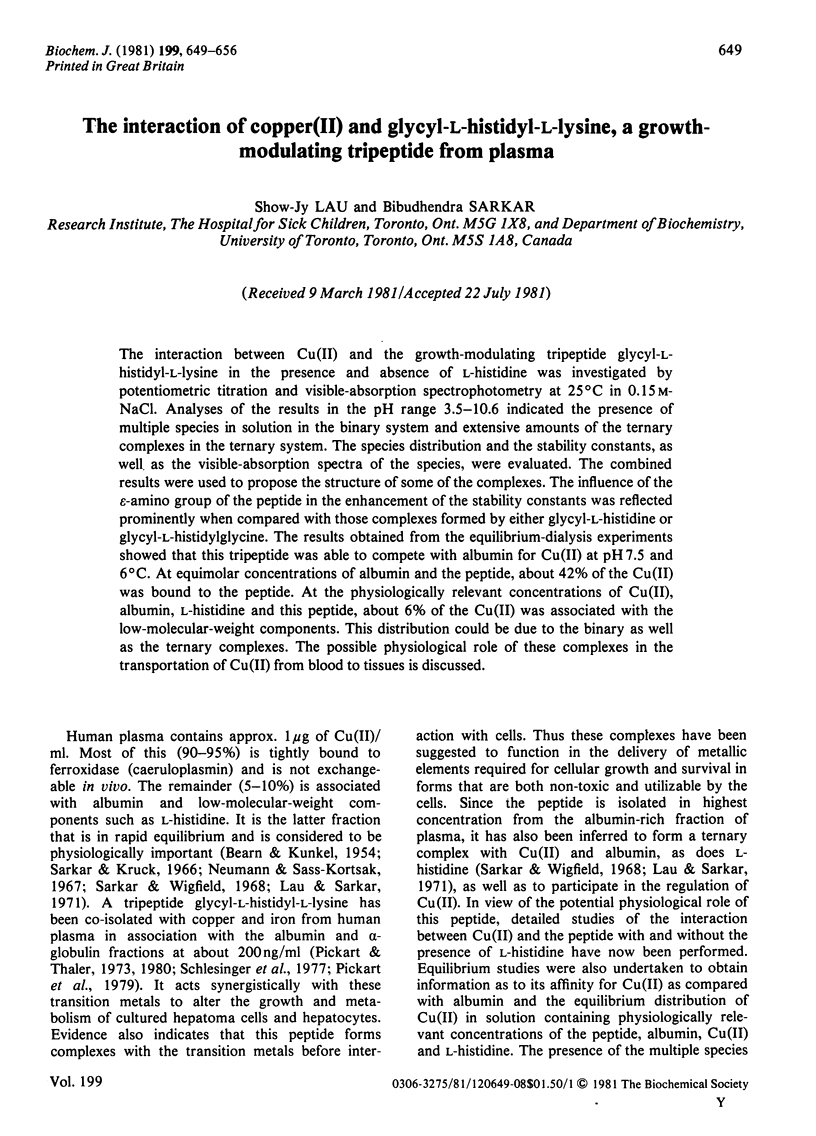
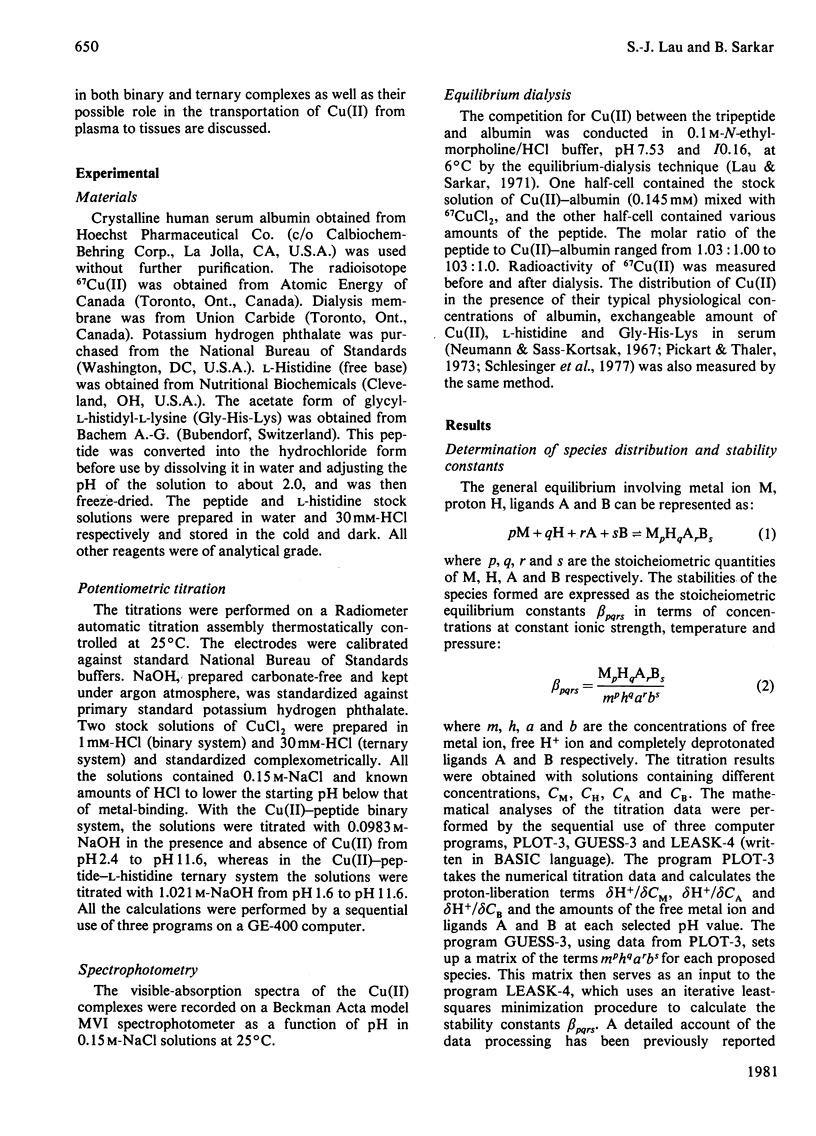
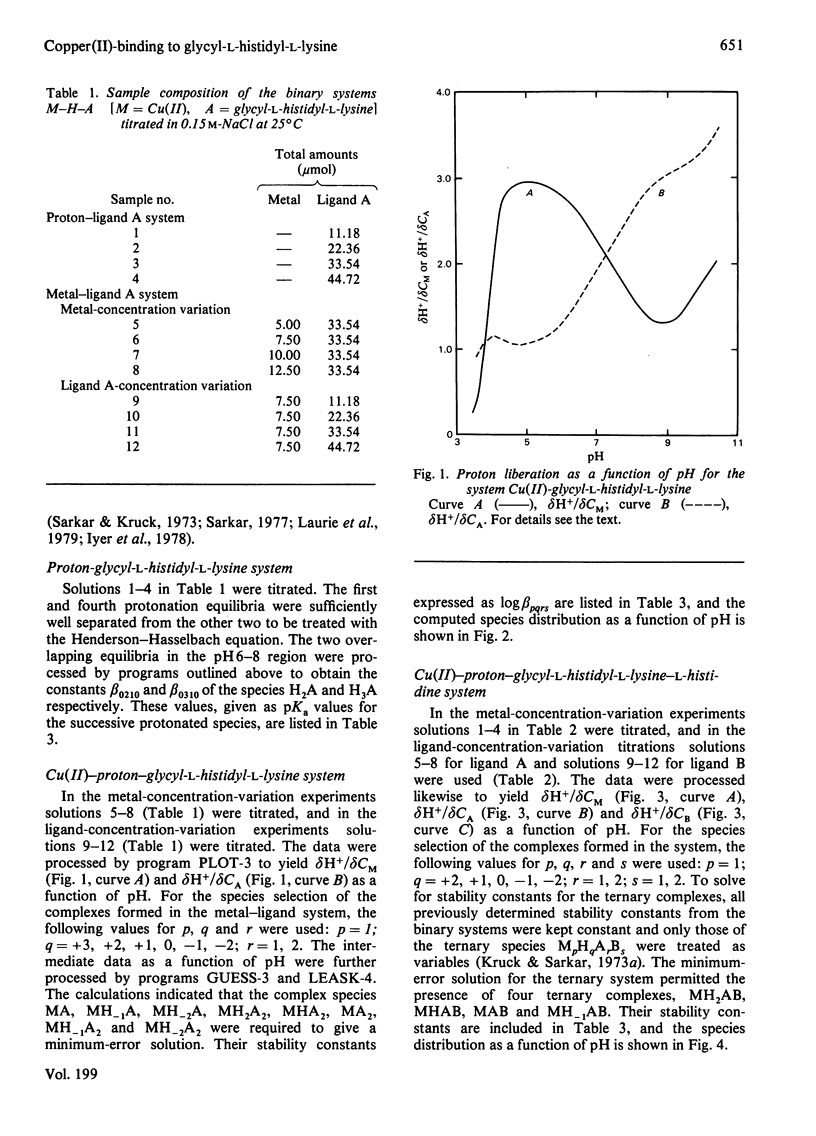
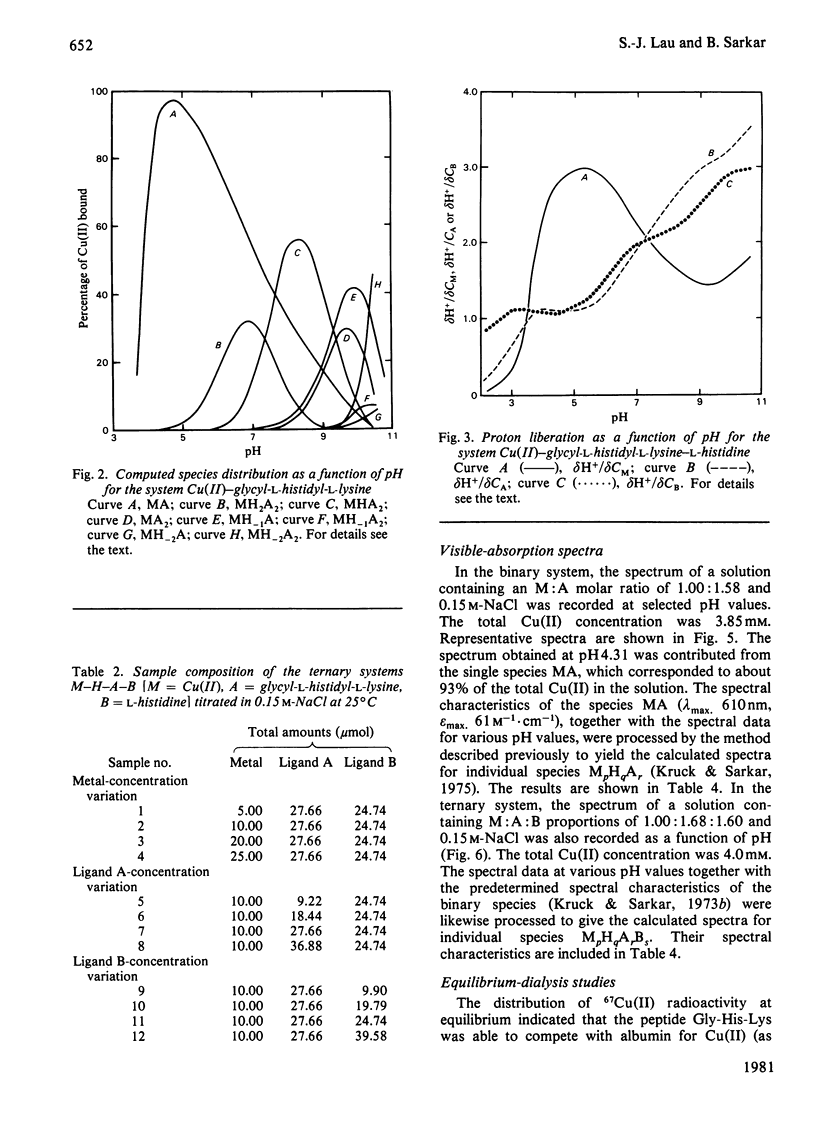
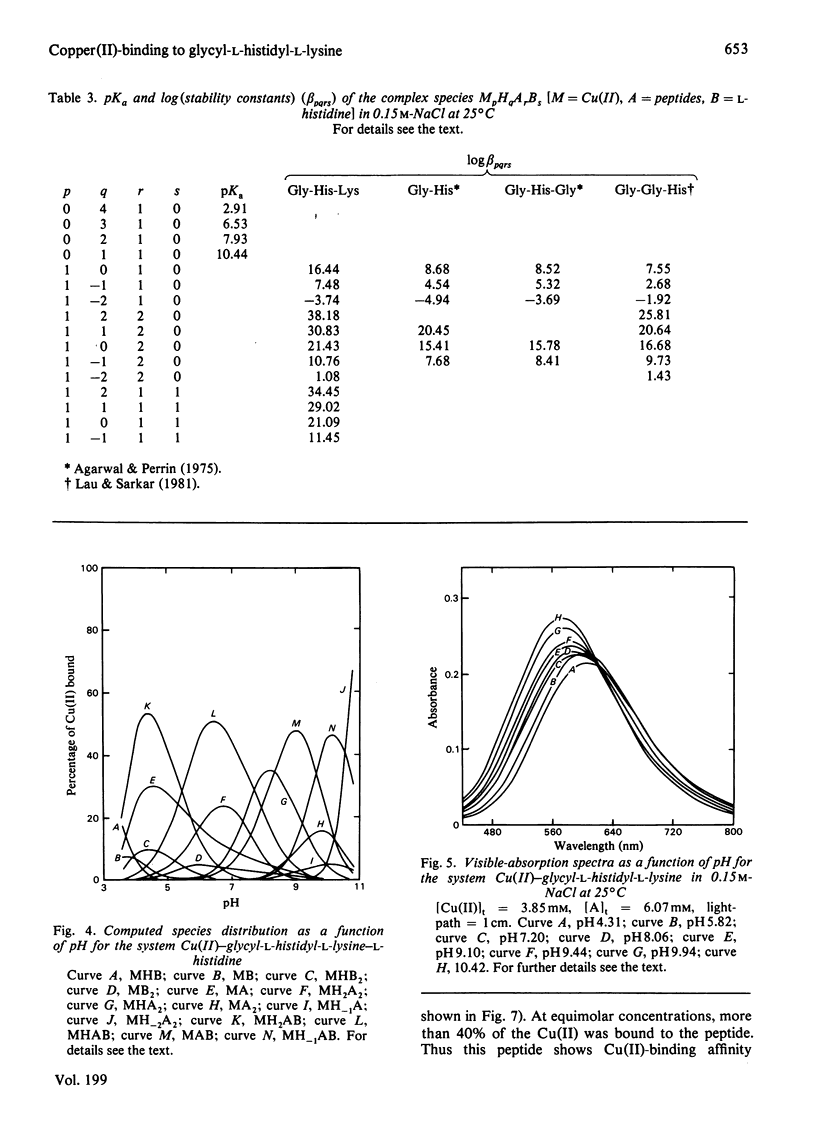
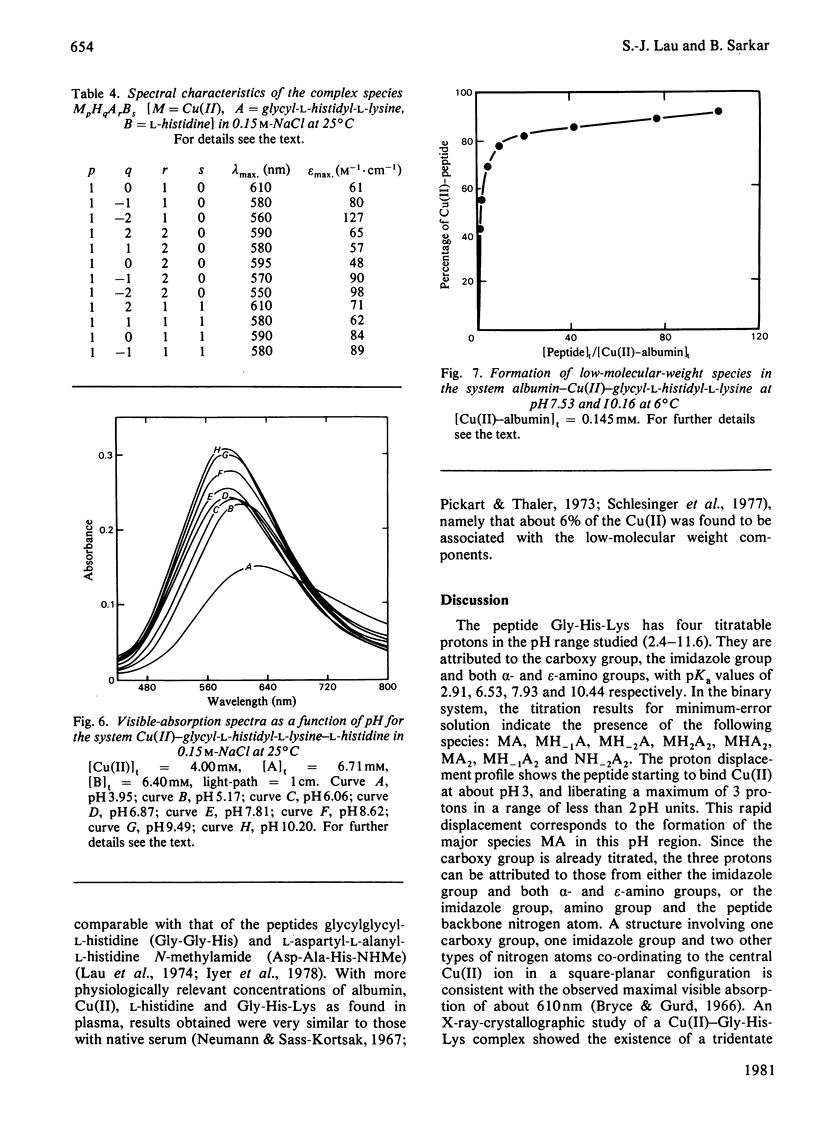
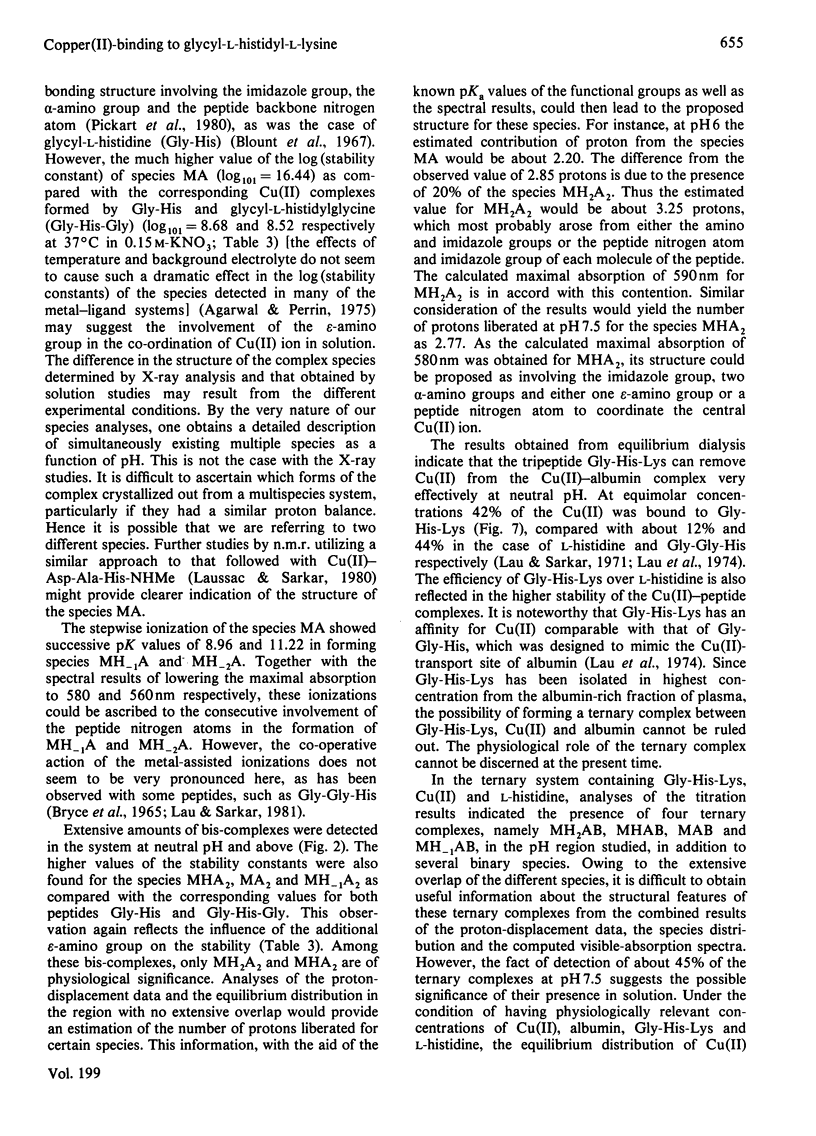
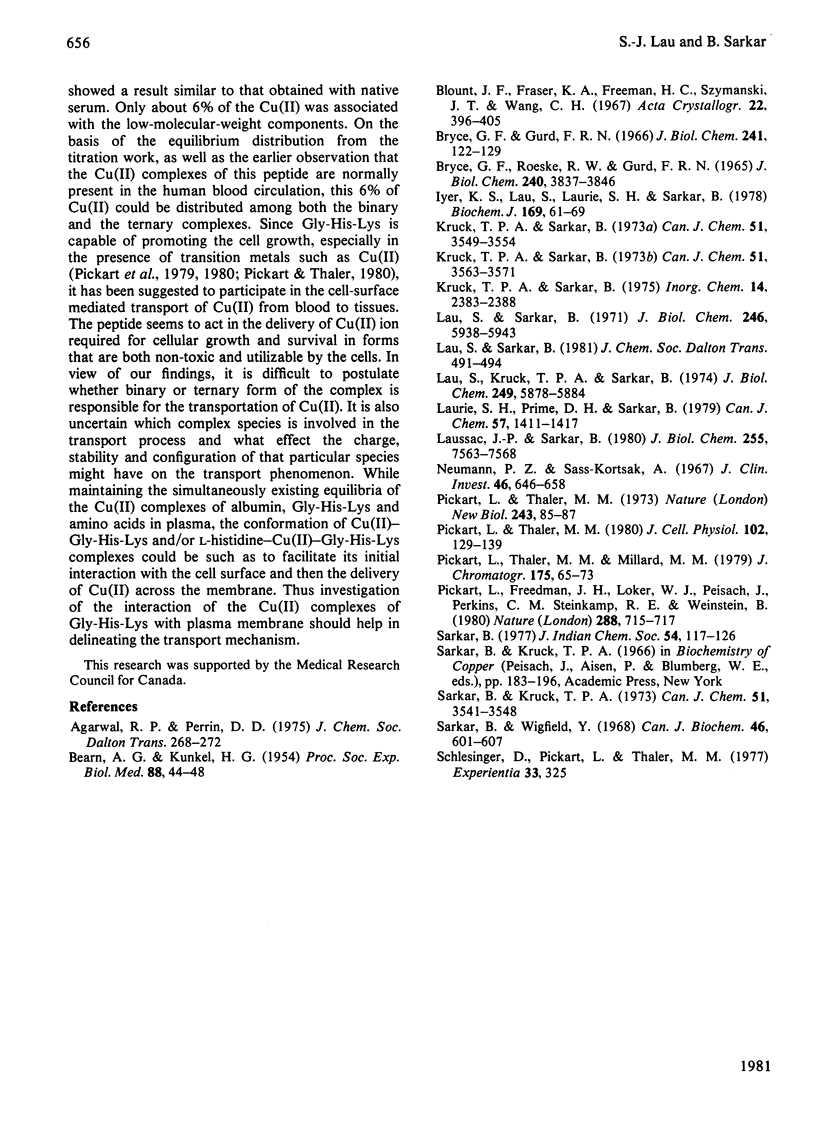
Selected References
These references are in PubMed. This may not be the complete list of references from this article.
- BEARN A. G., KUNKEL H. G. Localization of Cu64 in serum fractions following oral administration: an alteration in Wilson's disease. Proc Soc Exp Biol Med. 1954 Jan;85(1):44–48. doi: 10.3181/00379727-85-20780. [DOI] [PubMed] [Google Scholar]
- Blount J. F., Fraser K. A., Freeman H. C., Szymanski J. T., Wang C. H. Crystallographic studies of metal-peptide complexes. IV. (Glycyl-L-histidinato)copper(II)sesquihydrate. Acta Crystallogr. 1967 Mar 10;22(3):396–405. doi: 10.1107/s0365110x67000775. [DOI] [PubMed] [Google Scholar]
- Bryce G. F., Gurd F. R. Visible spectra and optical rotatory properties of cupric ion complexes of L-histidine-containing peptides. J Biol Chem. 1966 Jan 10;241(1):122–129. [PubMed] [Google Scholar]
- Bryce G. F., Roeske R. W., Gurd F. R. Cupric ion complexes of histidine-containing peptides. J Biol Chem. 1965 Oct;240(10):3837–3846. [PubMed] [Google Scholar]
- Iyer K. S., Lau S. J., Laurie S. H., Sarkar B. Synthesis of the native copper(II)-transport site of human serum albumin and its copper(II)-binding properties. Biochem J. 1978 Jan 1;169(1):61–69. doi: 10.1042/bj1690061. [DOI] [PMC free article] [PubMed] [Google Scholar]
- Lau S. J., Kruck T. P., Sarkar B. A peptide molecule mimicking the copper(II) transport site of human serum albumin. A comparative study between the synthetic site and albumin. J Biol Chem. 1974 Sep 25;249(18):5878–5884. [PubMed] [Google Scholar]
- Lau S. J., Sarkar B. Ternary coordination complex between human serum albumin, copper (II), and L-histidine. J Biol Chem. 1971 Oct 10;246(19):5938–5943. [PubMed] [Google Scholar]
- Laussac J. P., Sarkar B. 13Carbon-nuclear magnetic resonance investigation of the Cu(II)-binding to the native sequence peptide representing the Cu(II)-transport site of human albumin. Evidence for the involvement of the beta-carboxyl side chain of aspartyl residue. J Biol Chem. 1980 Aug 25;255(16):7563–7568. [PubMed] [Google Scholar]
- Neumann P. Z., Sass-Kortsak A. The state of copper in human serum: evidence for an amino acid-bound fraction. J Clin Invest. 1967 Apr;46(4):646–658. doi: 10.1172/JCI105566. [DOI] [PMC free article] [PubMed] [Google Scholar]
- Pickart L., Freedman J. H., Loker W. J., Peisach J., Perkins C. M., Stenkamp R. E., Weinstein B. Growth-modulating plasma tripeptide may function by facilitating copper uptake into cells. Nature. 1980 Dec 25;288(5792):715–717. doi: 10.1038/288715a0. [DOI] [PubMed] [Google Scholar]
- Pickart L., Thaler M. M. Growth-modulating tripeptide (glycylhistidyllysine): association with copper and iron in plasma, and stimulation of adhesiveness and growth of hepatoma cells in culture by tripeptide-metal ion complexes. J Cell Physiol. 1980 Feb;102(2):129–139. doi: 10.1002/jcp.1041020205. [DOI] [PubMed] [Google Scholar]
- Pickart L., Thaler M. M., Millard M. Effect of transition metals on recovery from plasma of the growth-modulating tripeptide glycylhistidyllysine. J Chromatogr. 1979 Jul 11;175(1):65–73. doi: 10.1016/s0021-9673(00)86403-1. [DOI] [PubMed] [Google Scholar]
- Pickart L., Thaler M. M. Tripeptide in human serum which prolongs survival of normal liver cells and stimulates growth in neoplastic liver. Nat New Biol. 1973 May 16;243(124):85–87. [PubMed] [Google Scholar]
- Sarkar B., Wigfield Y. Evidence for albumin--cu(II)--amino acid ternary complex. Can J Biochem. 1968 Jun;46(6):601–607. doi: 10.1139/o68-092. [DOI] [PubMed] [Google Scholar]
- Schlesinger D. H., Pickart L., Thaler M. M. Growth-modulating serum tripeptide is glycyl-histidyl-lysine. Experientia. 1977 Mar 15;33(3):324–325. doi: 10.1007/BF02002806. [DOI] [PubMed] [Google Scholar]


